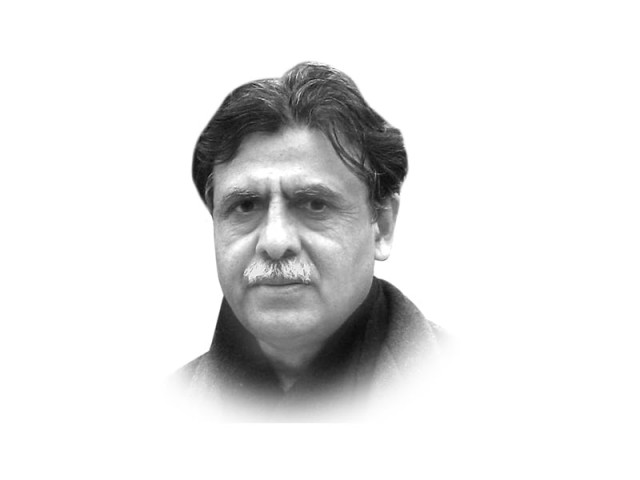Zarb-e-Azb: Handling the aftermath
Situation on-ground demands early clearing of whole area, making it possible for IDPs to return as early as possible.

Zarb-e-Azb, while responding to a malignant state of affairs, has also raised a few questions, the foremost being the delay in its timing. This inexplicable dithering, regardless of whoever was responsible, has resulted in great loss. The delay has given space to inimical elements to consolidate their position and continue launching lethal attacks on civilians and the armed forces.
The government, since last September, despite virulent attacks by terrorists, had been harping on the 'peace mantra', displaying precious little understanding of this cancer. The peace talks were neither here nor there from day one. The attack on the Karachi airport was indeed the final call for the armed forces to move in decisively.
Coming back to the IDPs, their plight needs to be appreciated from another standpoint, which makes them susceptible to adversarial propaganda. They had co-existed with the militants and learnt the art to live with their idiosyncrasies. It is an irony that despite the tribal belt being the epicentre of terrorism and acting as an ammunition dump, the tribals never felt the compulsion to leave their abodes. It was the fear of ground attack and aerial bombing that forced them to leave their homes. The situation on-ground at this point in time, demands an early clearing of the whole area and making it possible for the IDPs to return as early as possible.
Disaster management outfits should be completely geared to draw up plans for an on-ground survey as quickly as possible. There is a need to work out the financial outlay for the repair and reconstruction of residential structures, shops and markets, which have suffered damage during the air and ground poundings. As regards availability of funds, all new grandiose schemes in the PSDP or the prime minister’s programme should be put on hold; rehabilitation and reconstruction in North Wazirstan should have the first charge on that money. Any rehabilitation plan should call for simultaneous traction: former militants, who have shown their willingness to lay down arms, need rehabilitation, along with employable tribal youth, through massive infrastructure development programmes in the area.
Recovery and rehabilitation plans in North Waziristan should be led by competent civil servants and professionals. They should be given special incentives and their performance should be benchmarked and timelined. The area needs an infrastructure development employment plan, which should rope in all able-bodied youth. No one will be keen to join the suicide-bombing brigade if they have decent means to live on.
In the aftermath of the Swat operation, there had been criticism of the civil administration for not digging in its heals in the valley and as a result, frittering away the gains. This is misplaced criticism since insurgency-ridden areas, even after palpable clearance, are prone to relapse. Swat was indeed cleared of the mess, but the turmoil persisted on the edges. Therefore, a stabilisation phase has to be clearly defined. A collaborative approach requires constant combing throughout the country by the armed forces and law enforcement agencies.
Events flowing over from Afghanistan cannot be taken lying down. In recent times, some of the most virulent attacks have been staged from across the border. This shows that either the Afghan government is weak or is complicit. We need to take every step to ensure that the 'strategic depth’ mantra of yesteryear does not come back to life. This could only be done if we are able to show the Afghans that we have something to offer as a quid pro quo. The Afghans would certainly like to see us help promote peace and tranquilly in their country instead of foraying into their internal matters.
The ongoing operation has decidedly degraded the militants’ capability and very effectively denied them a base to mount virulent attacks. Taken to the end game, the operation will deny these elements off the hatcheries needed to nurture their prototypes. However, these elements are down but certainly not out. A good number has reportedly melted across the Durand line. The militants also enjoy some social space, as well as empathisers in the settled areas. But as long as they are in an unhinged state with their supply chain disrupted, any credible nexus with empathetic elements will not draw enough muscle to cause a major threat. An intelligent counter plan will require an unrelenting chase without giving them any time to regroup.
Published in The Express Tribune, July 29th, 2014.
Like Opinion & Editorial on Facebook, follow @ETOpEd on Twitter to receive all updates on all our daily pieces.


















COMMENTS
Comments are moderated and generally will be posted if they are on-topic and not abusive.
For more information, please see our Comments FAQ